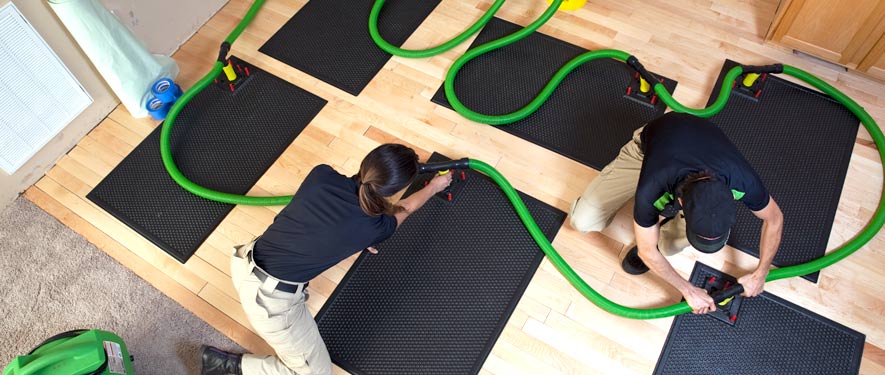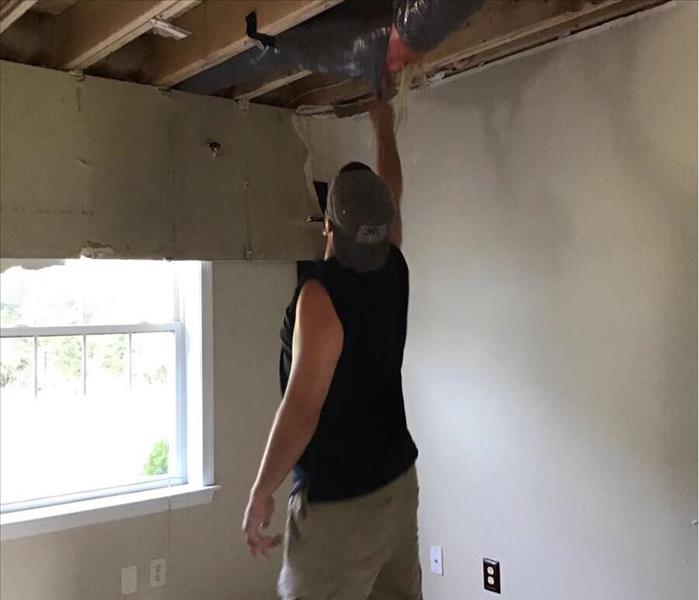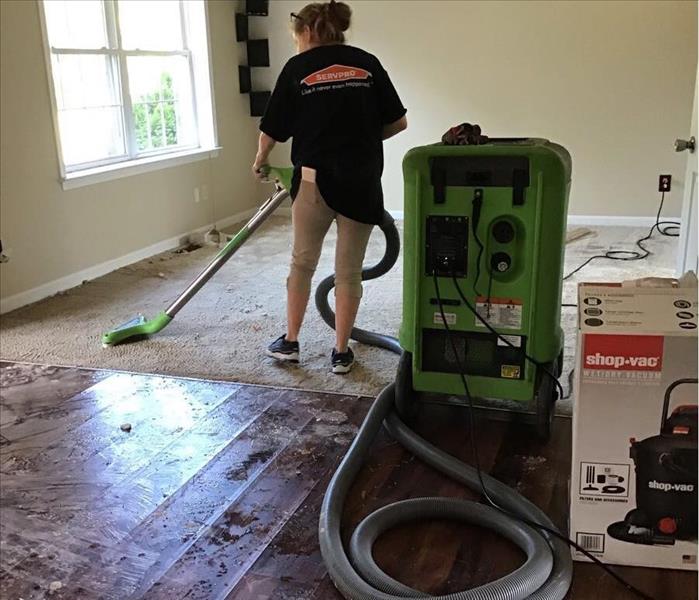
Step 4: Drying and Dehumidification
Our Water Damage Restoration Process
Step 4 in our Water Damage Repair and Restoration Process is drying and dehumidification. This basically means that after the excess water has been removed this is the step that will dry or remediate any retained water. Retained water is water absorbed into building materials and can cause wood to warp and can lead to mold damage. Generally we install dehumidification equipment and use monitoring equipment to track the progress. During this process we will monitor all affected walls and floors to ensure a complete drying process. The installation of air movers will create additional airflow to assist in this process.
Drying / Dehumidification
Our Professionals will use room measurements, temperature, and relative humidity to determine the optimal number of air movers and dehumidifiers to dry your home or business. We’ll carefully monitor the progress using moisture meters until the materials return to acceptable drying goals.
- Use Dehumidification Equipment
- Use Monitoring Equipment to Track Progress
Monitor Floor and Walls
We check the moisture levels to monitor the drying process.
- Monitor Floors
- Monitor Walls
Drying Equipment
- Industrial-grade dehumidifiers help prevent secondary water damage like swelling and warping of floors, walls, and furniture.
- High-speed air movers create airflow across walls, carpets, pads, and furniture, which accelerates the evaporation of moisture.

 24/7 Emergency Service
24/7 Emergency Service




